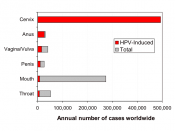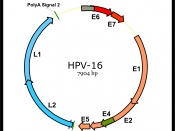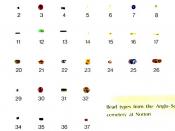A Report on "Belief Matters: Cultural Beliefs and the use of Cervical Cancer-Screening Tests." by Chavez, McMullin, Mishra, Hubbell in The Journal of the America Anthropological Assoc., Volume 4, 2001, 1114-11127.
This article examines different cultural and behavioral beliefs in Latina women that may affect their use of medical services, primarily with Pap exams and the risk factors of cervical cancer. Their objective was to use two different cultural models (Latina women, Anglo women) to show how much knowledge each had concerning the topic of cervical cancer. In Phase I they conducted interviews on attitude, behaviors, and beliefs related to cervical cancer. In this process the anthropologists used ethnographic interviews and survey research to provide an explanation for why these findings "make-sense." In Phase II of the research they collected data sets to examine the influence of beliefs on behaviors and determine the extent to which ethnographic findings were represented in the large population.
The importance of this article is to give an insight on how Latina women feel about cervical cancer and why they are at high risk for contracting it.
In the beginning of the article they raised the question of "to what degree do cultural beliefs matter in the use of medical services?" In their ethnographic surveys done in Orange County, California they found that beliefs matter in Latina cultures. The interviews were a combination of systematic data collection and open-ended questions. "For Latina immigrants, arriving in the United States requires a negotiation of the cultural knowledge about disease and prevention they arrived with, the predominant popular cultural knowledge, and knowledge promoted by physicians" (1115). However, their findings suggested that "Latinas whose cultural beliefs were closer to those of Anglo women were significantly more likely to have had a Pap exam within the past two years,


